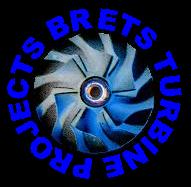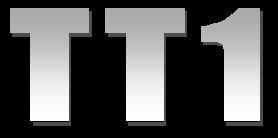 |
 |
 |
 |
 |
 |
 |
 |
 |
 |
 |
 |
 |
 |
 |
 |
 |
 |
 |
 |
 |
 |
 |
 |
 |
 |
 |
 |
 |
 |
 |
 |
 |
 |
 |
 |
 |
 |
 |
 |
 |
|
|
 |
|
|
|
 |
|
|
|
|
Last Updated:
October 15th 2005 |
|
|
|
|
|
|
Iíve made some changes to the engine. One change Iíve made is the ignition system. I have put away my frustrations with the old one and bought a model jet engine ignition system. Its made for store bought model jet engines for RC aircraft. My engine is a lot larger but still can use the same ignition system because it connects to a common automotive spark plug. I designed my combustion chamber so a regular automotive spark plug can screw in right beside the fuel injector. The ignition system is just a small black box. It has 2 red wires and one black one. You connect the red and black wire on the one side to a battery and the red wire to the spark plug and thatís it. It gives a very powerful hot spark. I think this should work perfect. |
|
|
Main Page
First Engine
Video
Contact Me
Readers Comments
Links |
|
|
|
|
|
|
 |
|
|
|
TT1
Project Quick Links: |
|
|
|
|
|
∑ Early Beginnings
∑ New Changes
∑ Testing |
|
|
|
|
|
|
Another change I made is the oil pump. The old system might have worked but it would only give about 60-80 PSI max. Thatís because it has a valve on a spring so that when internal pressure exceeds 60 PSI it leaks out a hole in the side of the pump to let excess pressure out. I could block it off but this system is big and bulky and I think I need something more dependable. I bought a Shuflow pump, Capable of 1.8gpm at 60PSI. But if you notice in the picture below there are two red wires going into the front of the pump. Thatís an internal switch in the pump that shuts off the power when the pump exceeds 60 PSI. If you disconnect the red wire from the switch and connect the pump directly to the battery you can get over 100psi, and a lot more flow rate. These pumps have special seals so that can be used with diesel, and other flammable oily liquids. |
|
|
|
|
|
 |
|
|
|
This is another change Iíve made to the engine. Iíve got the combustion chamber completed now. I used a racing aluminum cold air intake tube for a í92 Prelude and some large mild steel pipes I bought at western steel scrap yard and a few steel plates from the machine shop. |
|
|
|
 |
|
|
 |
|
|
|
|
|
|
Above you can see my flame tube has three different zones. Closest to the fuel injector and spark plug (bottom right) there is the primary zone. It consists of 4 rows with 12 holes in each row. There are forty-eight .2inch diameter holes in the primary zone. The secondary zone is the same design, it has forty-eight .25inch diameter holes. The dilution zone is a little different. It has two rows of 6 half-inch holes. The flame tube extends a quarter inch short of the end of the combustion chamber. I think I might modify that later so it extends the full length so all air gets mixed. Below you can see how I machined the plated I used for the combustion chamber. This is a CNC milling machine. This picture shows me cutting out a mounting bracket I drew in master cam for my turbo. You can see at the top of that part I used a toolpath fature called "Lead in Lead out". This is where the tool circles in then starts cutting then circles out so it makes a much nicer finish. Everything you make must have the paper work filled out (so it can be graded) then you must draw your part, Generate the G code, Post your program edit it if needed, send it over to the machine, set up your material, set your tool offsets, set your zeroís then run your part. If you know what youíre doing you can get a whole part completed from drawing to final product in one class period. Iíve done it a few times. Most times you draw it the day before you make it. Thereís two pieces for the mounting bracket on the turbo, The bottom piece you can see already on the turbo and the top piece that is being cut. I made it out of 1-inch thick T6061 aluminum. Itís extremely lightweight and strong, this type of aluminum is aircraft grade. Iím using a 3/8Ē 2-flute carbide end mill. If you use anything more than a 2 flute end mill it will get clogged up because the aluminum doesnít chip off as fast or as small as other metals. When cutting steal you can use a 4-flute end mill because the steel breaks off in smaller chips and doesnít clog as easy. The yellow liquid is coolant. It used to be blue but after you use it a few times it turns yellow and smells bad. Itís used to cool off the tool and the part. If anything over heats then the part will not be in tolerance. Tolerances are tighter than 0.005 of an inch. These machines are extremely accurate. The coolant also helps lubricate the tool. With out it there would be a very high-pitched screeching sound. Cutting these parts is somewhat a quiet thing. You should never strain the machine. At the collage we never load the spindle much more than 50%, which keeps the noise pretty quiet. This is because were making parts for the sake of learning and were not trying to mass-produce them as fast as possible like a factory. Iíve practiced making programs smaller and more efficient to make machining run time faster. If you made every program faster by 30 seconds by changing the way the machine cuts a part in a factory, and you made a few hundred parts a day. Then you would be making a huge difference in the amount of parts you can make in a day. |
|
|
|
 |
|
|
 |
|
|
|
|
|
|
May 14th 2004
Today was the last day of collage until next year and I just got my engine completed. I have changed the control panel to a metal one and I have an oil cooler mounted with cooling fans. I just need to order a V band clamp, hago oil burner nozzles that flow 2-4gph, and then I need to make a few gaskets and hook up the oil lines. The thing about ordering hago oil burner nozzles is that theres a minumum order of $30 so that mean I am going to buy a wide range of diffrent nozzles. This way I can experiment with them and see what works best. |
|
|
|
 |
|
|
|
This is how I am going to make my afterburner. This is ouit of a CD i have all about 2 turbines engine's. This is a proven design and if you have you measurements right you could add one 100+ pounds of thrust with the afterburner. I'm going to have 8 injectors spread around where they are on the diagram and then when the fuel enters the dump zone it recirculates and ignites the fuel. The recirculation helps burn most of the fuel inside the after burner. some will still shoot out the back. |
|
|
|
 |
|
 |
|
|
|
|
 |
|
|
|


